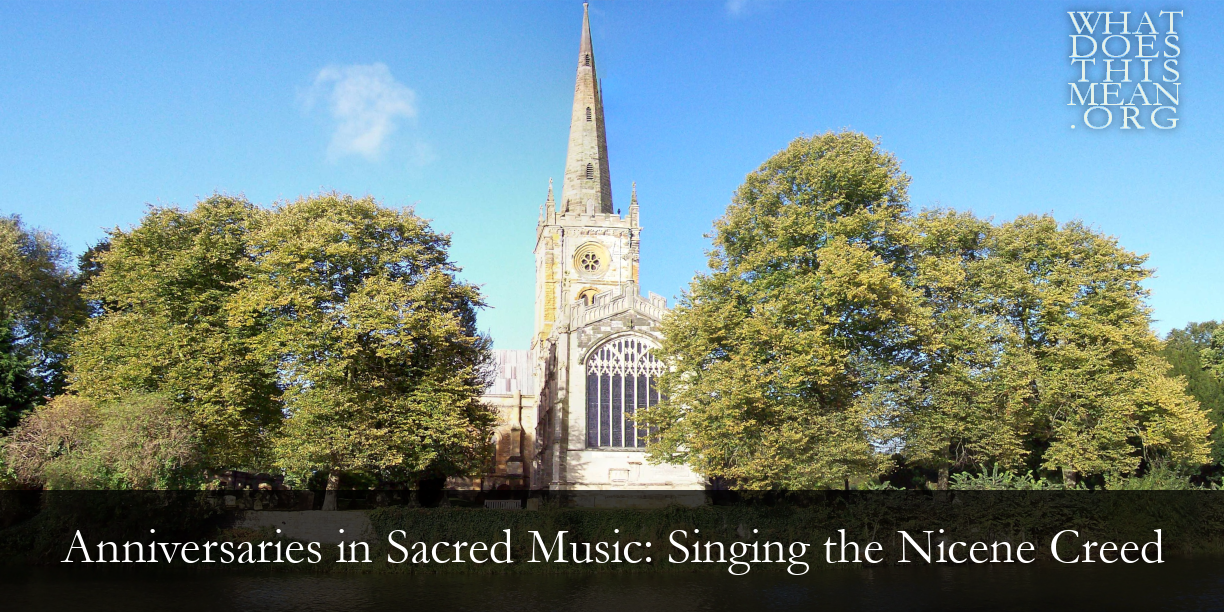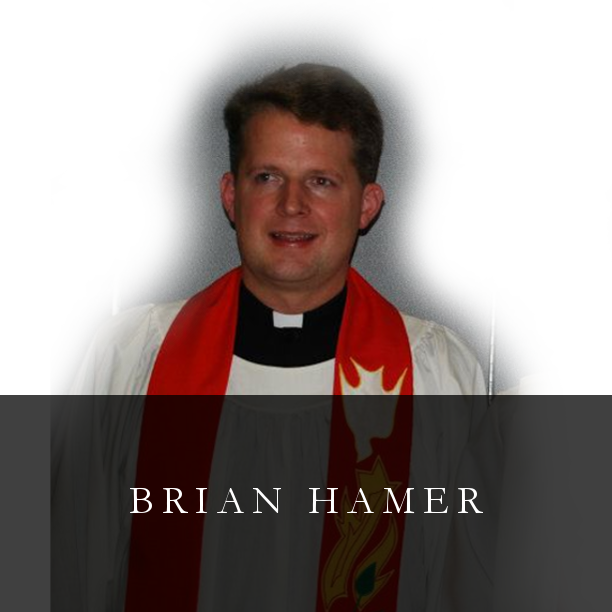And Thee, O Holy Ghost, we raise / Our equal and eternal praise
“Be present, holy Trinity”
Kyrie (“Lord, have mercy”)
Gloria (“Glory be to God on high”)
Credo (“I believe in one God”)
Sanctus (“Holy, holy, holy”)
Agnus Dei (“Lamb of God”)
Martin’s setting of the Creed begins in textual unison, and then becomes more polyphonic and complex, making the most of both choirs and opportunities for textual and musical contrast. For example, the choirs echo one another on majestic phrases such as “God of God, light of light,” as if two choirs of angels are calling to one another. Set in contrast to this music is one of Martin’s most endearing musical phrases and a highlight for composer and listeners alike: “The Credo holds some of Martin’s own favorite music, on the words ‘et incarnatus est’ [1:42 in the video below]; he would use this music again in his Christmas Oratorio, stressing that these bars from the Mass were ‘very dear to me’” (Dale Warland, as quoted in ACC CD 120, liner notes). Martin uses a jagged and ascending motif for “Crucifixus,” perhaps depicting the Son of Man as being lifted up on the cross. “Et sepultus est” (“He was buried”) descends to the depths, followed by buoyant sixteenth figures to depict the resurrection of the Son of God. The new life of the One who rose on the third day carries seamlessly into the life of the Spirit, the Lord and giver of life, a musical reminder that the life lived incarnationally in the Son is now lived sacramentally in His body, the church.
So clear away all distractions, rejoice that seventy percent of English words come from Latin, and give thanks that Frank Martin—after a forty-year hiatus—finally let the world hear this remarkable music, especially fitting for the commemoration of the Council of Nicea on June 12th. Times for Martin are on the left, by the Latin text; times for RVW are on the right, by the English translation.
| Credo in unum Deum, Patrem omnipotentem, factorem caeli et terrae, visibilium omnium et invisibilium, 00:26 Et in unum Dominum Iesum Christum, Filium Dei unigenitum, et ex Patre natum, ante omnia saecula, 00:52 Deum de Deo, lumen de Lumine, Deum verum de Deo vero, genitum, non factum, consubstantialem Patri: per quem omnia facta sunt. 1:20 Qui propter nos homines et propter nostram salutem descendit de caelis. 1:42 Et incarnatus est de Spiritu Sancto ex Maria Virgine, et homo factus est. 2:19 Crucifixus etiam pro nobis sub Pontio Pilato; passus et sepultus est, 3:16 et resurrexit tertia die, secundem Scripturas, et ascendit in caelum, sedet ad dexteram Patris. 3:47 Et iterum venturus est cum gloria, iudicare vivos et mortuos, cuius regni non erit finis. 4:11 Et in Spiritum Sanctum, Dominum et vivificantem: qui ex Patre Filioque procedit. 4:26 Qui cum Patre et Filio simul adoratur et conglorificatur: qui locutus est per prophetas. 4:39 Et unam, sanctam, catholicam et apostolicam Ecclesiam. Confiteor unum baptisma in remissionem peccatorum. 5:01 Et expecto resurrectionem mortuorum, et vitam venturi saeculi. Amen. | I believe in one God, the Father almighty, maker of heaven and earth, and of all things visible and invisible. 00:28 And in one Lord Jesus Christ, the only-begotten Son of God, born of the Father, before all worlds, 00:52 God of God, Light of ;ight, very God of very God, begotten, not made, of one substance with the Father: by whom all things were made. 1:28 Who for us men and for our salvation descended from heaven. 2:03 And was incarnate by the Holy Spirit of the Virgin Mary, and was made man. 2:49 He was crucified for us under Pontius Pilate; suffered and was buried, 3:42 and rose the third day, according to the Scriptures, and ascended into heaven, sits at the right hand of the Father 4:00 And he will come again with glory, to judge the living and the dead, Whose kingdom shall have no end. 4:27 And in the Holy Spirit, Lord and giver of life: who out of the Father and the Son proceeds. 4:44 Who with Father and Son is worshiped and glorified: who spoke by the prophets. 5:19 And in one, holy, catholic and apostolic Church. I confess one baptism For the remission of sins. 5:46 And I expect [the] resurrection of the dead, and the life of the world to come. Amen. |
Extra Choral Credit: Hearing Martin’s Entire Mass
Featuring the Netherlands Chamber Choir



 RSS Feed
RSS Feed
